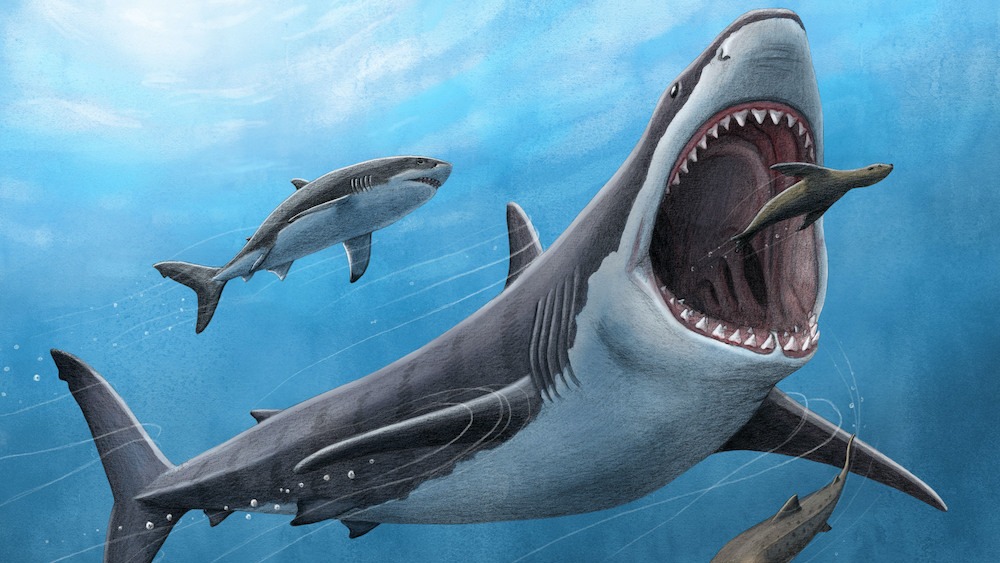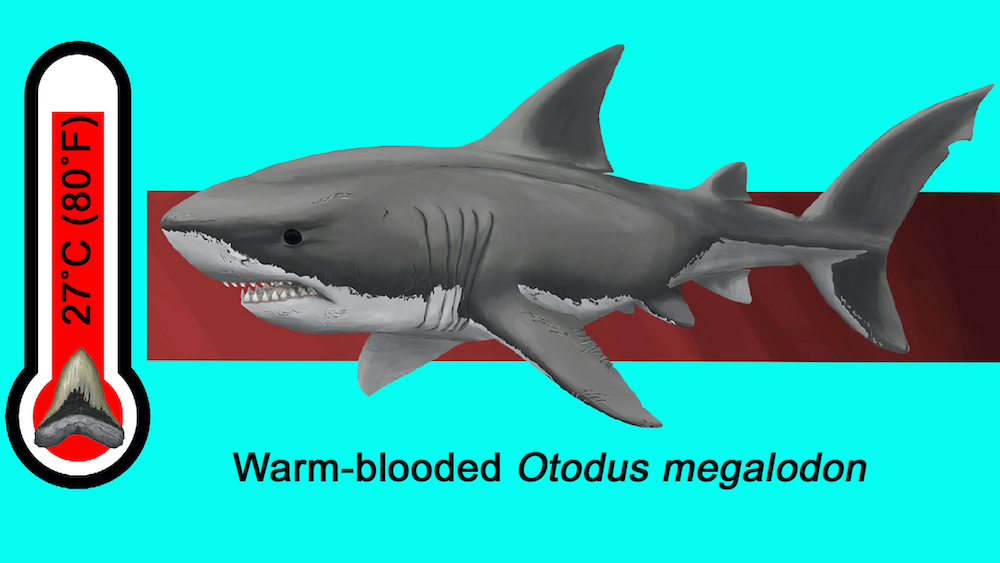Megalodon was a warm-blooded killer, but that may have doomed it to extinction
Scientists studied the fossilized teeth of megalodon and determined that the jumbo-size extinct species of shark was warm-blooded.

Megalodon, a mega-size species of extinct shark that prowled the world's oceans between 23 million and 3.6 million years ago, was likely warm-blooded and had a body temperature that was significantly higher than that of modern-day sharks, new research suggests.
A team of international scientists made the discovery while studying the fossilized teeth of the megalodon (Otodus megalodon), whose species name means "big tooth." These jumbo-size carnivores often grew to be similar in length to tractor-trailers, roughly 50 feet (15 meters) long, according to a study published Monday (June 26) in the journal Proceedings of the National Academy of Sciences.
Like many shark species, including great whites (Carcharodon carcharias), megalodon is classified in the new research as being "regionally endothermic," meaning that it can maintain its body heat even when its external environment is much cooler.
For the study, researchers used a combination of geothermal techniques to estimate the giant shark’s body temperature based on the compositions of various isotopes, or versions of elements, in fossilized megalodon teeth.
Related: Could the megalodon still exist today?
"The temperature at which the mineral formed, including biologically mineralized hard tissues like teeth, can be extrapolated from the degree to which these isotopes have bonded or 'clumped' together," study co-author Kenshu Shimada, a professor of paleobiology in the College of Science and Health at DePaul University in Chicago, told Live Science in an email. "The geochemical technique employed was previously used to examine the warm-bloodedness of dinosaurs. The new study demonstrates that the method can be applied also to marine vertebrates like sharks using their hard, well-mineralized anatomical components such as teeth."
The study found that the average body temperature of the megalodon was approximately 80 degrees Fahrenheit (27 degrees Celsius), whereas modern-day sharks with regional endothermy have an average body temperature between 72 F to 80 F (22 C to 26.6 C), according to the study.
Sign up for the Live Science daily newsletter now
Get the world’s most fascinating discoveries delivered straight to your inbox.

The megalodon's increased body temperature would have conferred many benefits.
"Warm-bloodedness is advantageous because it allows an animal to have a more active lifestyle, such as being able to sustain long-distance swimming or fast swimming," Shimada said. "Present-day warm-blooded sharks, such as mako and great white sharks, not only are able to swim fast relative to their cold-blooded counterparts, but their high metabolic heat from warm-bloodedness also facilitates food digestion."
However, warm-bloodedness also had its drawbacks and may have even led, in part, to the megalodon's extinction.
"The timing of megalodon's disappearance in the fossil record corresponds to the climatic cooling of the Earth," Shimada said. "Warm-bloodedness must have actually provided an 'extra edge' to megalodon to be able to survive in cooling waters. Yet, the fact that the species became extinct illuminates the probable vulnerability or the 'cost' of being warm-blooded because warm-bloodedness requires constant high food intake to sustain high metabolism."
He added, "It’s quite possible that there was a shift in the ecological landscape due to the climatic cooling that caused the seal level to drop, altering the ocean environments, where the populations of the types of food megalodon depended on, such as marine mammals, possibly became scarce, leading to the demise of megalodon."
Jennifer Nalewicki is former Live Science staff writer and Salt Lake City-based journalist whose work has been featured in The New York Times, Smithsonian Magazine, Scientific American, Popular Mechanics and more. She covers several science topics from planet Earth to paleontology and archaeology to health and culture. Prior to freelancing, Jennifer held an Editor role at Time Inc. Jennifer has a bachelor's degree in Journalism from The University of Texas at Austin.









